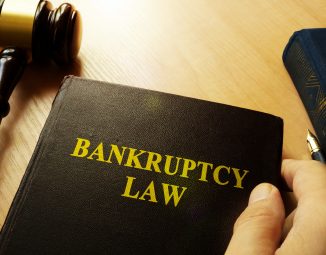Expanded Chapter 11 Small Business Reorganization Act Eligibility: A Temporary Opportunity for New Jersey and Pennsylvania Businesses in Distress
The COVID-19 pandemic has upset the expectations of many business owners. Lines of business that seemed profitable are now struggling, and previously underappreciated lines of business are blossoming. The pandemic will bring about long-term changes in how the economy operates, as well as short-term difficulties in conforming to current customer demands and regulatory hurdles.
Two recent changes in the law have opened a limited-time opportunity to restructure small business operations and finances more quickly than ever before, while ensuring that the current owners retain control of the business throughout the process.
In February 2020, the Small Business Reorganization Act (“SBRA”) became effective, allowing a new kind of chapter 11 bankruptcy proceeding often called a Subchapter V case. This SBRA process was originally limited to business groups with total debts below $2.7 million. However, in March 2020, the CARES Act increased this debt limit to $7.5 million, allowing much larger small businesses to qualify for Subchapter V treatment. Unless the law changes again, this debt limit will decrease back to $2.7 million on March 27, 2021.
The good news is that any case filed prior to March 27, 2021 can still use the higher debt limit. A business does not need to be in danger of shutting down to use the bankruptcy process; it only needs to have a valid reorganizational purpose for the bankruptcy.
The most obvious reorganizational purpose of a bankruptcy is to deal with existing debts. In a bankruptcy, a business can modify, renegotiate or even discharge most types of debts. In a Subchapter V case, the debtor business proposes a payment plan, generally three to five years in length that pays some debts over time and discharges others without full payment. The bankruptcy law permits a business to force some of its creditors into an extended repayment period, even if they do not consent. Businesses can also modify certain liens that secure their debt, rendering their creditors unsecured to the extent that they are owed more than the value of their collateral. The ability to involuntarily restructure debts and discharge some unpaid debts gives the debtor business an advantage in renegotiating on a consensual basis. A bankruptcy can also stretch out the repayment of a debt, turning a debt that is due in the short term, or is fully matured, into a multi-year repayment that the business can afford to make.
Bankruptcy law also includes special tools that allow a business to eliminate unprofitable sectors or locations while minimizing the cost of shutting them down. A bankruptcy debtor can reject leases and other ongoing contracts, and pay any pre-rejection arrears over time. Pruning away unprofitable locations to preserve the overall business is one of the main benefits of a Subchapter V bankruptcy. This tool is especially useful for businesses like multi-location professional practices (for example dental, accounting, medical or veterinary practices), restaurant groups or construction or development groups working on several projects at once.
Two key hurdles previously prevented businesses from using chapter 11 to reorganize, except in extreme distress: the cost and the loss of control. Subchapter V goes a long was to fixing those concerns. It could take up to a year to confirm a repayment plan in a chapter 11 bankruptcy. The small-business-friendly provisions of Subchapter V shorten that timeline to just a few months.
A Subchapter V debtor remains “in possession” of all its business assets. That means the business owners maintain control during the bankruptcy process, and can continue to operate the business to improve performance in parallel with the restructuring of debts.
The most important benefit of a Subchapter V bankruptcy is that pre-bankruptcy owners retain control even after the payment plan is confirmed. In a traditional chapter 11, unless all creditors are paid in full, the owners are required to contribute new outside value in order to keep ownership and control of the reorganized business. There is no new value requirement in Subchapter V. As long as the business can fund its payment plan by a combination of sales of existing assets and profits from future earnings, the ownership structure of the business remains in place, allowing the people who shepherded the business through its reorganization to be rewarded for taking the risk.
The CARES Act has raised the debt limit for Subchapter V filings, but only for a limited time. Entrepreneurs should assess whether a Subchapter V reorganization could help revitalize – or even save – their business. If you are interested discussing Subchapter V bankruptcy or any other distressed business situation, the attorneys in Obermayer’s Bankruptcy and Business Reorganization group bring over 60 years of collective experience to resolving significant financial issues.
The information contained in this publication should not be construed as legal advice, is not a substitute for legal counsel, and should not be relied on as such. For legal advice or answers to specific questions, please contact one of our attorneys.





